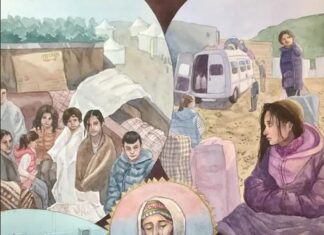By Harry A. Kezelian III
Special to the Mirror-Spectator
DETROIT — “That generation…”
Stephan Karougian, the 80-something male soloist of St. John’s Armenian Church Komitas Choir in Detroit, was telling me about his parents, as I sat in his living room, interviewing him about his life in Armenian music. He shook his head and sighed. He didn’t really expound upon those two words, but his tone of voice was enough to tell the story.
Karougian’s father had been born in Pingyan, a village in the Province of Sivas in Ottoman Turkey, very close to the large town of Agn in Harput province (the Ottoman borders divided up the Armenian villages of that region, which also included Armdan and Divrig). He told me that when his father would gather with friends, they would sing a song in Turkish beginning with the words “Egin de veran olmush” (“Agn is in ruins”). It was a very sad song about their region. But when Karougian first told me about this song, he didn’t say that it was a song about the Genocide, he simply told me that they sang it.
I recognized the words as a variation of the lyrics of Egin Havasi a well-known Anatolian song which has been performed in both Armenian and Turkish. I played for Karougian my copy of the 1917 New York recording of this song by violinist-singer Kemani Minas [kemani is a title in Turkish given to a violin player, as udi is to an oud player]. It was indescribably sad. Karougian listened silently and began again to tell me about his family story, his life story.













